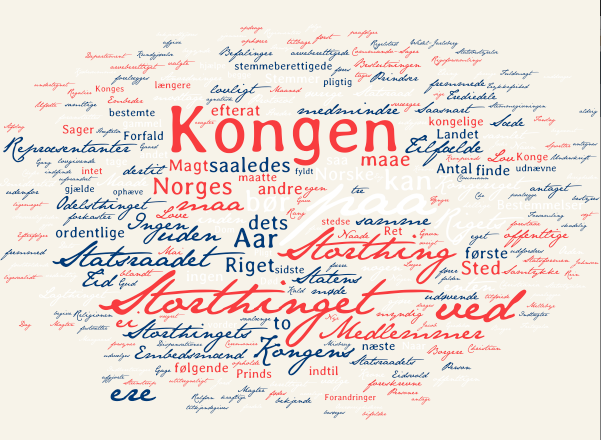Grunnloven av 1814 som ordsky
WordClouds, eller ordsky på norsk, du har sikkert sett mange av dem. Ideen er å lage en visuell presentasjon av frekvensen av ordene i teksten. Dette er nyttig da det enkelt kan gi oss en oversikt over hvilke ord som brukes i teksten, og samtidig har den en klar visuell “dette er kult”-effekt. For å lage en wordle kan bruke nettsiden som, om ikke introduserte fenomenet, gjorde det populært: Wordle. Vi skal gjøre det på en annen måte, ved hjelp av…
